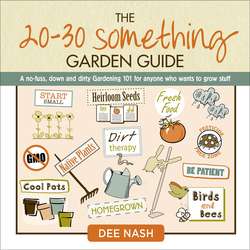Читать книгу The 20-30 Something Garden Guide - Dee Nash - Страница 23
На сайте Литреса книга снята с продажи.
Water: the stuff of life
ОглавлениеSo, you’ve picked your pots, plants and soil, and you’re ready to go. However, without water, your garden will quickly become a barren wasteland. All life needs water to survive. Plants should be placed where they are easy for you to water. Many apartments don’t have an outside water spigot on the balcony. If that’s the case, either hook up a hose to your kitchen faucet – with a faucet adapter – or carry water to your plants. Your choice comes down to convenience. If you plan to tote water to your plants, buy a good quality watering can. Plastic watering cans are lightweight and easy to carry, even when full of water. I particularly love Haws watering cans – a good Christmas present – because they are perfectly balanced, with a great watering rose (sprinkler).
Containers should be checked for moisture at least once a day when summer heats up. Even when it rains, containers beneath an overhang won’t get water. To test whether a container needs water, insert your index finger down into the soil. Potting soil should feel damp, not sopping wet or dry. Because containers are watered everyday, they will also need consistent nutrients. Buy a slow release or watersoluble organic fertilizer for monthly feeding. Group containers together for easier watering on hot summer days. You will probably water your plants before you head off to work, and no one wants to haul a hose around the deck while wearing office attire.
Drip watering. For even sweeter relief, install a drip watering system with a timer. This is perfect for when you leave town because containers can become diseased or die if they go more than a day or two without water. You can buy kits and additional drip emitters at varying water rates, all very easy to install. I placed a simple timer on mine to make sure the pots got watered to my specifications while I was gone. (See the next chapter for how to install a drip system for your pots.) If possible, group your containers together in the shade to reduce water loss. Have a veggie-loving friend come over to pick vegetables and check on things while you’re away. Some vegetables will quit producing if you leave them alone for too long.
Good to know: Crops like lettuce and other leafy vegetables require more water than bulbs like onions and garlic.
